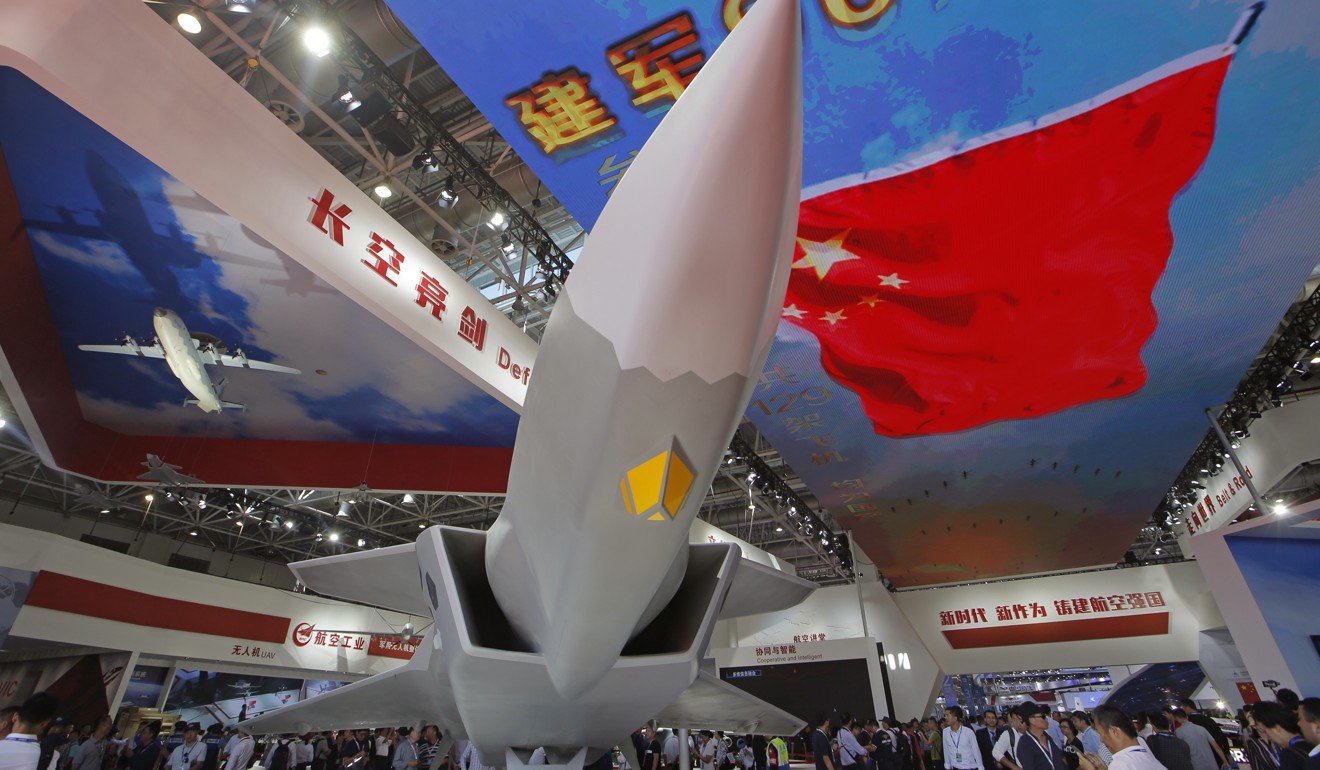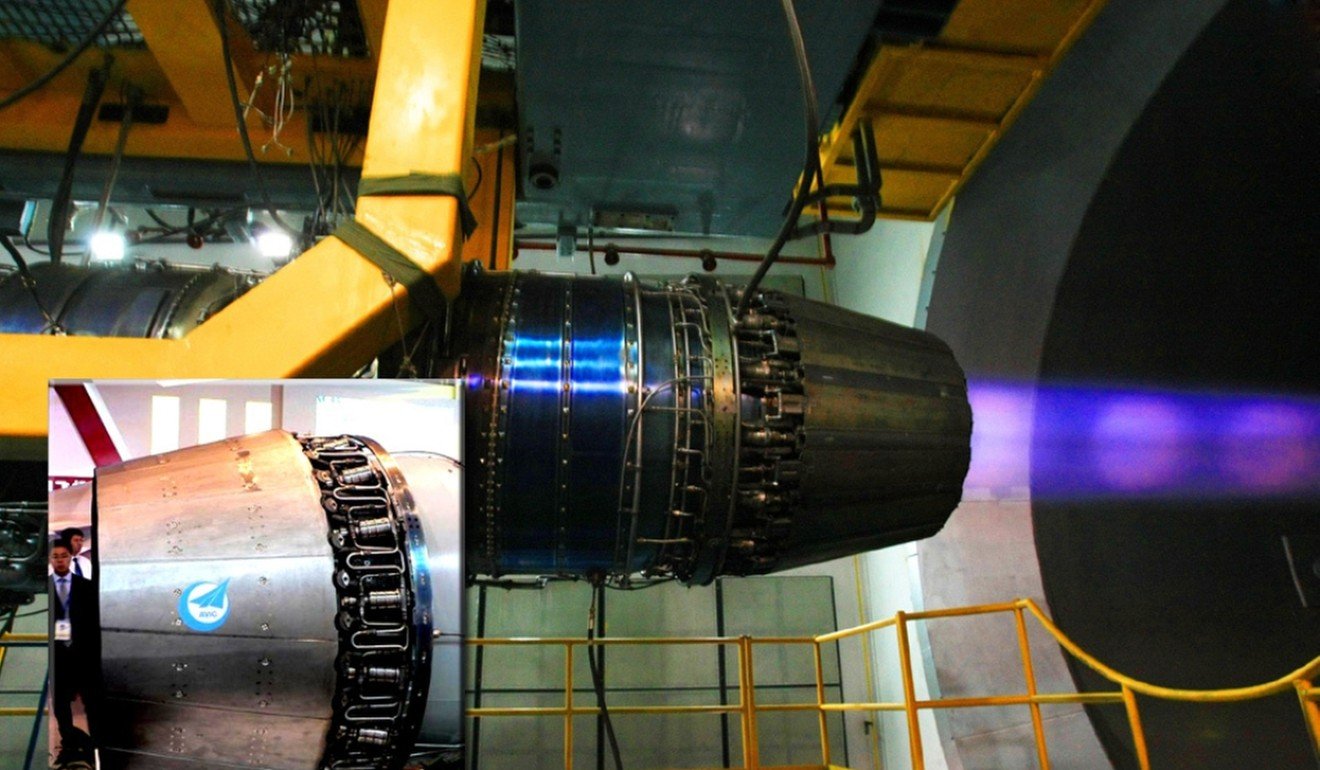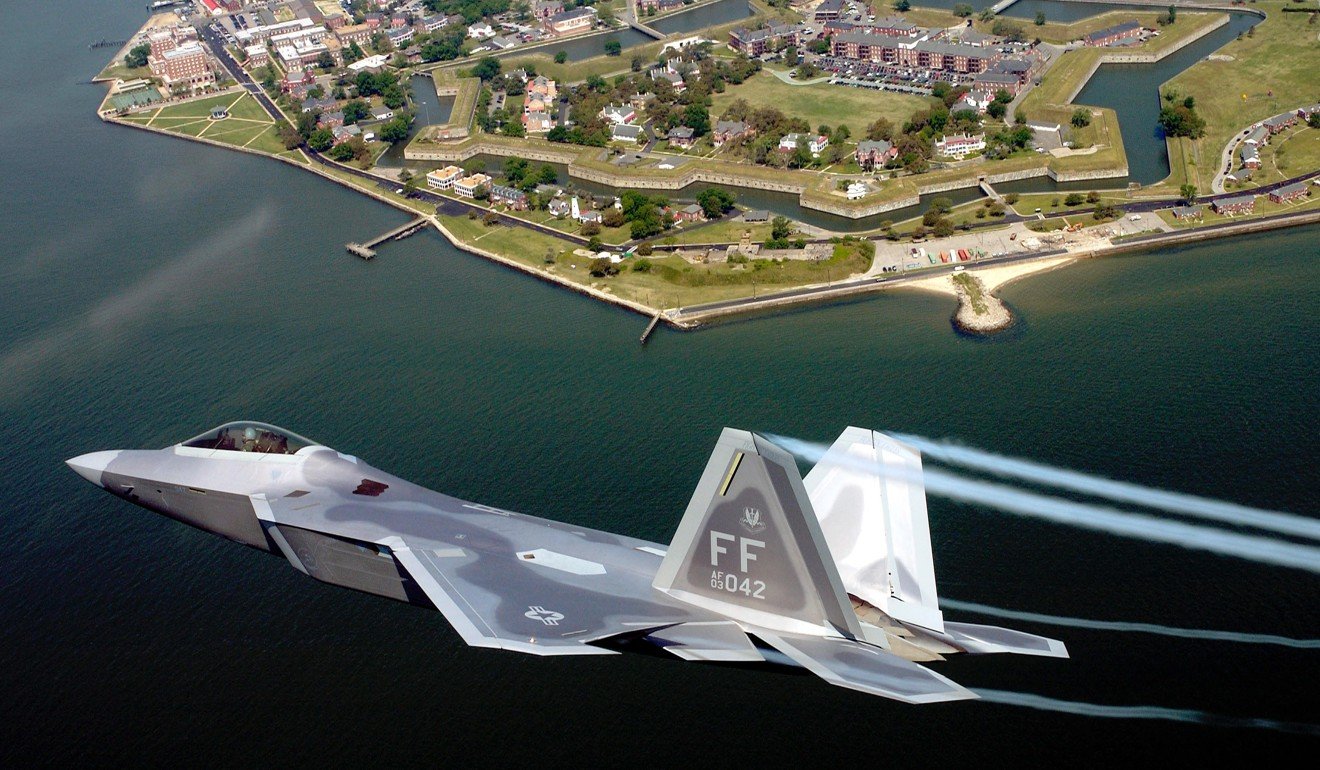
China reveals J-20 stealth fighter’s missile carrying capability at Zhuhai air show
- Jets open missile bays during high-speed fly-past, showing they could do so if launching missiles during air battles
- Manoeuvre is beyond Russia’s new-generation Su-57 stealth fighter, according to insider
The Chinese air force has displayed its first stealth fighter jet’s ability to carry missiles for use in high-speed flight for the first time at the country’s biggest air show, in a bid to demonstrate that China has the next most advanced combat capability after the United States.
Two of the force’s four J-20 jets opened their missile bay doors during a fly-past at the biennial Airshow China in Zhuhai, in the southern province of Guangdong, each jet showing four medium- and long-range air-to-air missiles in its underside main bays and a short-range combat missile on both sides of the aircraft.
The demonstration on Monday – the air force’s 69th anniversary – showed that all the doors could be smoothly opened within a second, while the J-20s remained in high-speed circulating flight, which would be necessary if launching missiles during air battles.
However, it remains unclear whether the J-20 is able to launch missiles in high-speed flight. Xu Anxiang, deputy commander of the People’s Liberation Army air force, said the demonstration had indicated that the J-20 “has initial operational capability”.

“The capability to open bay doors during a high-speed fly-past is still a challenging and advanced technology and capability, because even Russia’s new-generation Su-57 stealth fighter jet is still incapable of doing it,” said a military insider who requested anonymity.
Only the United States air force’s F-22 Raptor and F-35 Lightning II stealth fighter jets have proven able to open missile bay doors and launch missiles during high-speed flight.
A news report about the J-20 that aired Tuesday on state television did not mention the missile-carrying features, but offered details about new enhancements which allow the fighter to be refuelled mid-flight.
A technician interviewed on the China Central Television broadcast said a receptacle on the right side of the fuselage is hidden under the skin of the aircraft to maintain stealth capabilities. Stealth aircraft have skin that is designed to minimise radar wave reflections to help avoid detection.
“This means J-20 has an even longer range and larger combat radius,” the technician said, adding that with a large internal fuel tank, the J-20 is expected to have a combat radius of more than 1,100km.
Military analysts said that Monday’s flying display was aimed at showing the air force’s muscle, even though all the missiles hung on the aircraft were simulation models and it may take several years for the stealth aircraft to be equipped with tailor-made powerful engines.
Three of the J-20s – which appeared in a six-minute display last Tuesday at the opening of the Zhuhai air show – were still equipped with Russian AL-31 Saturn engines, which do not provide it with enough thrust.

The WS-15, a purpose-built thrust engine for the J-20, is still under development that could take several years, requiring the aircraft to be equipped with the Russian engines for safety reasons, the insider said.
Initially the J-20s had been fitted with WS-10B engines, which were designed for the earlier generations of J-10 and J-11 fighters.
A modified version of the J-10B powered by WS-10B engines gave a demonstration at the air show of its superfast manoeuvrability, including its J-turn, Cobra, and “falling like a leaf” moves.
“It’s impossible for the J-20 to make those superfast manoeuvres like the modified version of the J-10B, because of a lack of thrust,” Macau-based military observer Antony Wong Dong said, adding that developing the thrust version of the J-10B had taken nearly three decades.
“Even when the WS-15 is ready, it will still take more time for the J-20 to become a fully combat-ready stealth aircraft after comprehensive combat drills.”
Hong Kong-based military commentator Song Zhongping said some aspects of the J-20’s design were more advanced than those of the American F-22 stealth fighter jets – which joined the US air force in 2005 – although the J-20 trailed the F-35 in both stealthiness and advanced material.

“China started developing the J-20 in the late 2000s, so engineering designers could learn the best designs and avoid the shortcomings of the F-22 – that’s why the design of the J-20’s bay doors is better than that of the F-22, with flip-over doors increasing the aircraft’s stealthiness,” said Song, a military commentator for Hong Kong’s Phoenix Television.
“The J-20s just joined the PLA air force last year, while the F-22s and F-35s have served in the US air force for much longer, being modified after many rounds of comprehensive combat drills. So the J-20s also need more time to be turned into real stealth fighter jets after the WS-15 thrust engine is ready.”
The F-22 has undergone a major upgrade since joining the US air force more than a decade ago, including adding air-to-air advanced missiles, as well as other sophisticated radar and network information technologies.
The J-20 made its public debut at the Zhuhai air show in 2016, before formally joining the PLA air force in March last year.
Additional reporting by Liu Zhen

